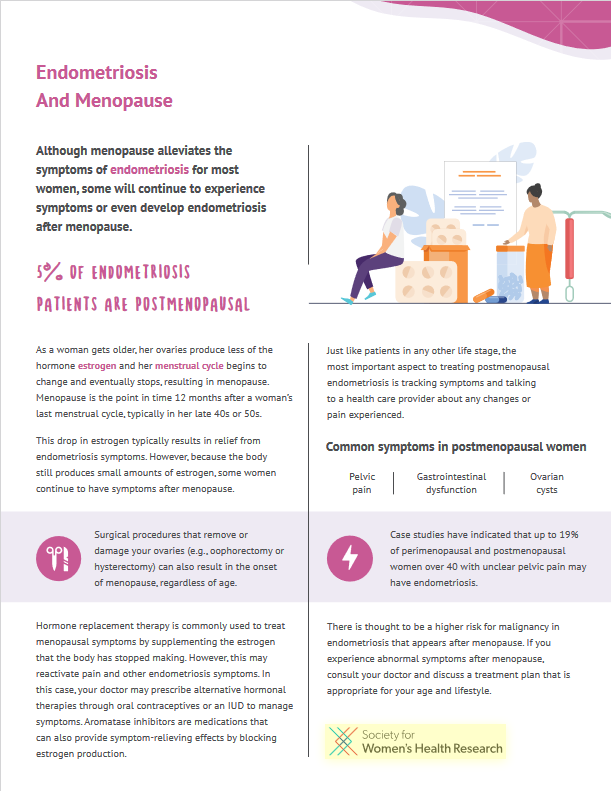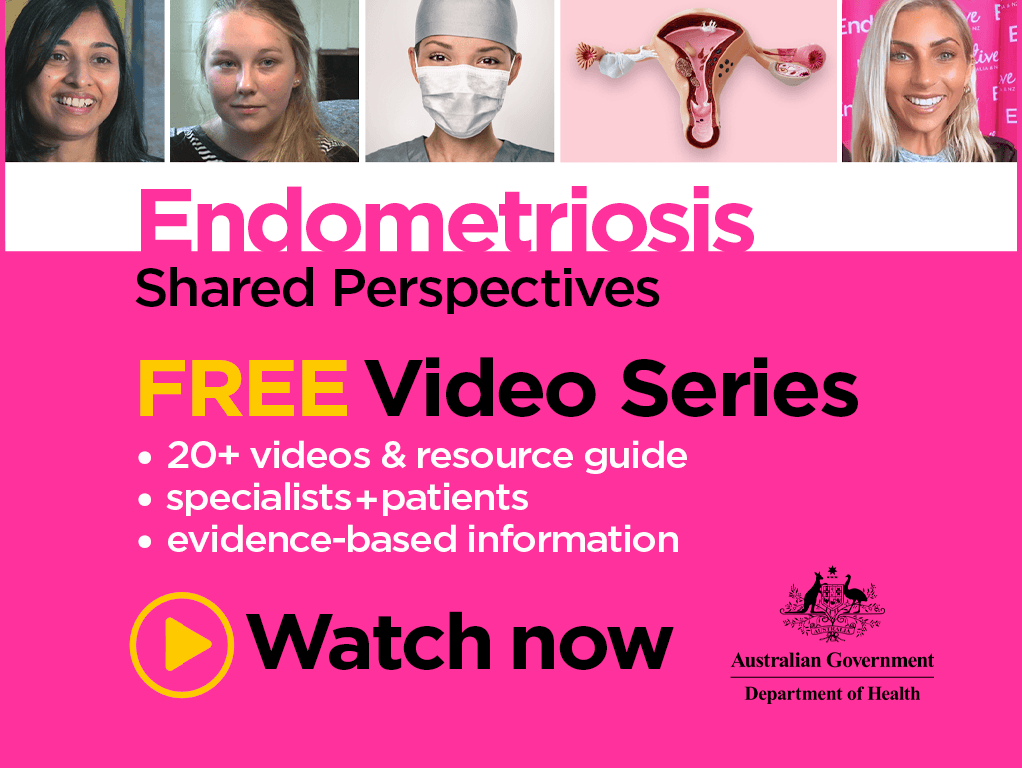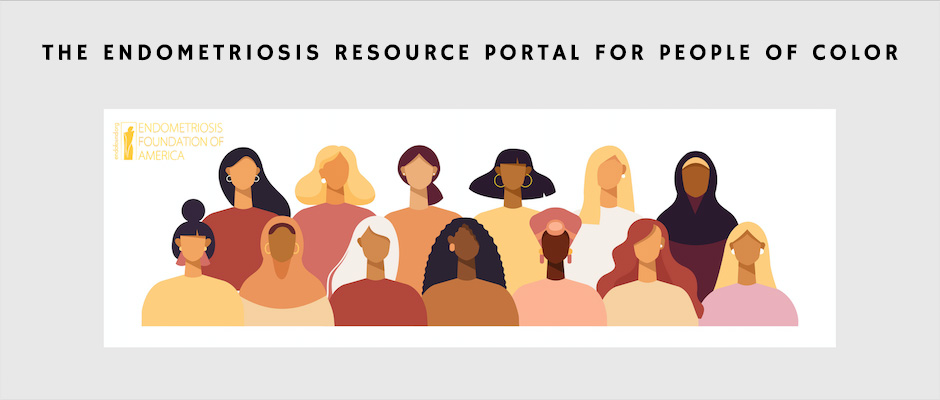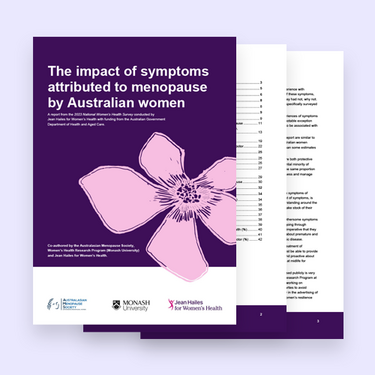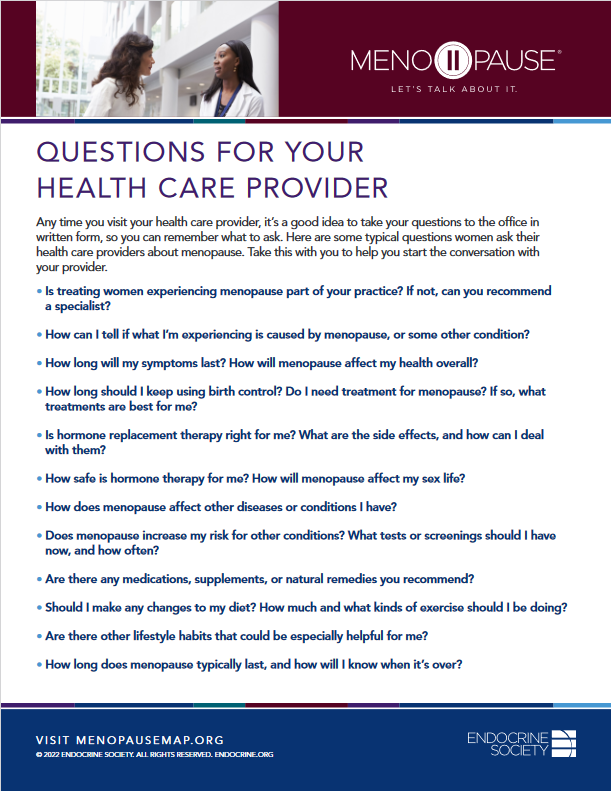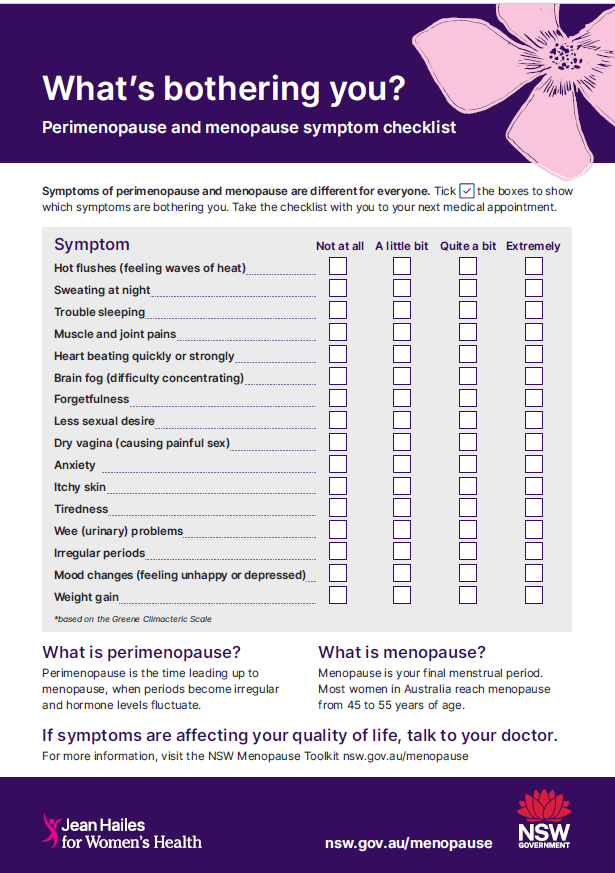Endometriosis after menopause, usually does improve. However, “5% of endometriosis patients are postmenopausal”.
Endometriosis
What is endometriosis?
In Facts About Endometriosis the World Endometriosis Society’s definition is:
Endometriosis After Menopause
Does endometriosis go away after menopause?
In Endometriosis Toolkit: A Patient Empowerment Guide the (United States) Society for Women’s Health Research note in Endometriosis and Menopause:
Health Care Provider
What if I think I am having symptoms of endometriosis after menopause?
In Endometriosis: Does Endometriosis Go Away After Menopause? the Office on Women’s Health, United States Department of Health and Human Services, Womenshealth.gov note:
If you are having symptoms of endometriosis after menopause, talk to your doctor about treatment options”.
Health Topics A-Z
Where may I find Health Topics A-Z related to Endometriosis After Menopause?
In Health Topics A-Z you may find:
Links
Where may I find Links related to Endometriosis After Menopause?
Your Country may have Links similar to:
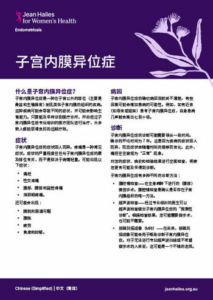
Links
This Links List to third party websites is neither comprehensive nor exhaustive. Inclusion on this Links List does not imply endorsement or recommendation. Non-inclusion on this Links List does not imply non-endorsement or non-recommendation. Third party websites are not under the control of Meno Martha International Menopause Directory. Third party websites may contain explicit medical images and/or sexual references. Please read Meno Martha International Menopause Directory’s Links Policy before proceeding to a Link. Please contact Webmaster if you experience a problem with a Link.New or Updated
- Endometriosis Before and After Menopause
- How Is Endometriosis Diagnosed? Scans, Laparoscopy and Support | NHS [02 March 2024]
- Postmenopausal Endometriosis: A Challenging Condition Beyond Menopause [05 March 2024]
- Video: Endometriosis Commonly Improves During Menopause
- Videos & Podcasts: Videos – Interviews: How Should We Manage Menopause In Women With Endometriosis?
- Webinars: Previous – Reproductive Conditions and Consequences for Menopausal Health and Management
- BMS TV: Endometriosis
- Below the Belt [Film]
- Endo Explained: Ask the Experts
- Endoactive.org.au [EndoActive, Australia and New Zealand]

- Endofound.org [Endometriosis Foundation of America]
- Endometriosis
- Endometriosis A-Z
- Endometriosis Before and After Menopause
- Endometriosis Toolkit Video Series
- Endometriosis Toolkit Video Series: Understanding Endometriosis
- Endometriosis Toolkit: A Patient Empowerment Guide – Endometriosis and Menopause
- Endometriosis [+ Videos]
- Endometriosis and the Menopause
- Endometriosis – Multilingual Fact Sheets
- Endometriosis-uk.org [Endometriosis UK] [United Kingdom]
- Endometriosis-uk.org [Endometriosis UK] [United Kingdom]: Endometriosis Friendly Employer Scheme
- Endometriosis.org
- Endometriosis: Diagnosing the Debilitating Condition [+ Video Courtesy: Mayo Clinic News Network]
- Endometriosis: Symptoms and Causes – Symptoms: Symptoms During the Menopause Transition
- Endometriosisaustralia.org [Endometriosis Australia]
- Endometriosisaustralia.org [Endometriosis Australia]: Webinars
- Endotv.com [EndoTV Health Network, The Endometriosis Foundation of America, United States]: Ask the Doctors
- Got Endometriosis? Experts Answer Your Top Questions
- How Is Endometriosis Diagnosed? Scans, Laparoscopy and Support | NHS
- Induced Menopause In Women With Endometriosis – For Patients
- Mayo Clinic Minute: When Surgery for Endometriosis Is the Answer [+ Video Courtesy: Mayo Clinic News Network]
- Menopause
- Menopause Mindfulness: Understanding the Many Paths To Menopause
- Menopause: Understanding the Changes and Finding Relief | Dr Susan Davis | The Proof Podcast EP 256
- Myth or Fact? 8 Common Endometriosis Questions Answered | Ask Cleveland Clinic’s Expert
- Navigating Menopause With Endometriosis: Expert Insights [Video]
- Navigating Menopause: Expert Insights and Solutions | Dr Susan Davis | The Proof Podcast EP 245
- Postmenopausal Endometriosis: A Challenging Condition Beyond Menopause
- Precision In Practice for Endometriosis Care
- Resources: Endometriosis [+ Multilingual Fact Sheets]
- Rethinking How We Treat Endometriosis | Linda Griffith | TEDxMIT
- Surgical Menopause and Menopause In Women with Endometriosis | Dr Newson Instagram Live
- The Endometriosis Resource Portal for People of Color

- The Truth About Menopause Supplements | Dr Sarah Berry
- Tips To Help Manage Menopause Symptoms
- Video Series-2023: NAMS 2023 Nonhormone Therapies Position Statement for Bothersome Menopause Symptoms
- Video Series-2024: Preparing for Your Menopause Health Care Visit
- Video: Endometriosis Commonly Improves During Menopause
- Video: Strategies for Managing Menopause Symptoms for Women With-Endometriosis
- Videos & Podcasts: Videos – Interviews: How Should We Manage Menopause In Women With Endometriosis?
- Videos and Podcasts: Videos – Interviews: A Simple Approach To Menopause: The Menopause Quick Six (www.MQ6.ca)
- Webinars: Previous – Reproductive Conditions and Consequences for Menopausal Health and Management
- What Is Endometriosis? Symptoms and Treatment | NHS
- What Is Perimenopause & How Has It Been Linked To Endometriosis?
- World Endometriosis Organisations (WEO)


